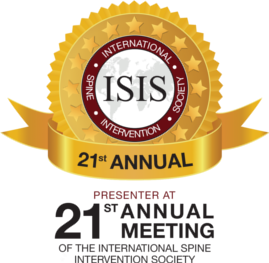Your back absorbs the impact of daily life, every jump, every lift, every prolonged period of sitting. However, what occurs when the vital shock absorbers between your vertebrae, your intervertebral discs, start to fail? This wear and tear is known as Degenerative Disc Disease (DDD), a natural process that may cause mild discomfort or significant disability. It is not a disease in the traditional sense, but it is a natural and generally age-related process of decline. Hereditary factors, personal lifestyle, and accumulated spinal stress commonly influence this degeneration.
Understanding the causes of this wear and tear in the spine is important to understand its effects and help you determine what you can do to cope with its consequences.
What Is Degenerative Disc Disease?
To clearly understand degenerative disc disease (DDD), it is imperative to have a basic knowledge of the anatomy of the spine. The human spine is not a single bone but a complex column of separate bony segments, called vertebrae. These vertebrae act as the body's scaffolding, protecting the spinal cord and enabling various movements. Some critical structures lie between these vertebral bodies: the intervertebral discs.
These spinal discs function as specialized shock absorbers, comparable to a car’s suspension system, or, more vividly, a jelly donut. This disc is bipartite, with each part having a distinct biomechanical structure. The outermost, the annulus fibrosus, is a strong, fibrous ring, like the tough outer crust of our culinary analogy. It mainly encloses the contents within it and provides the vertebral column with structural integrity.
The inner core of this strong outer ring is the nucleus pulposus, which is the "jelly" of our analogy.
This gel-like, soft center is primarily water and acts as the primary shock-absorbing medium, equally dispersing compressive forces throughout the vertebrae in dynamic movements. During flexion, rotation, and ambulation, the nucleus pulposus deforms and recoils, preventing direct contact between adjacent vertebrae. Degenerative Disc Disease implies these vital discs' natural wear and tear, in which the annulus fibrosus weakens and the nucleus pulposus loses its water content and elasticity. This trade-off affects the ability of the disc to perform its important functions of load bearing and shock absorption in the spinal region.
Reasons for Degenerative Disc Disease
The degeneration process, which causes diseases like degenerative disc disease, is multifactorial and results from a complex interaction between intrinsic biological factors, extrinsic mechanical loads, and genetic susceptibilities. Although commonly viewed as a consequence of aging, it is not merely a sequel to chronological development. It is a sum of factors that undermine the intervertebral discs' structural integrity and functional effectiveness.
The causes are:
-
Natural Aging Process
The natural process of aging is considered the most common cause of degenerative disc disease. The process is common to all people as they age. As you age, your intervertebral discs experience two main changes:
- Dehydration, also known as desiccation — Your discs that serve as shock absorbers between your vertebrae are mostly made of water. With time, they lose water content, becoming thinner, less pliable, and less capable of cushioning your spine. This loss of hydration makes them less efficient at absorbing impact and keeping your spine correctly aligned.
- The creation of structural tears — The outer wall of your disc is called the annulus fibrosus, and it can get small tears due to years of wear and tear. Although these tears are not always symptomatic immediately, they can weaken your disc's structural integrity, leading to additional degeneration. This is a typical, natural part of aging, just like wrinkles or gray hair.
Looking at disc degeneration in this light can help ease your concern, as it puts a potentially worrying diagnosis into perspective as a natural biological occurrence instead of an alarming abnormality.
-
Genetic Predisposition
Genetics also plays a significant role in your predisposition to degenerative disc disease. Your genes determine the quality and structure of your cartilage and the very composition of your spinal discs. If your close relatives, including parents or siblings, suffer from degenerative disc disease, then by inherited traits and characteristics, you are personally at a higher risk of developing the condition, due to inherited traits.
-
Environmental and Lifestyle
In addition to the factors of age and genetics, which are out of your control, there are several lifestyle and environmental causes of degenerative disc disease progression and development, which provide you with opportunities to reduce your risk proactively. Jobs that require frequent lifting, bending, or twisting movements are physically demanding and put significant forces on your spinal discs, which wear and tear faster. On the other hand, a sedentary lifestyle, where you spend most of your time sitting, may also be harmful. When seated, especially with a bad posture, your lumbar spine is subjected to excess compressive forces, which impede the normal diffusion of nutrients in your discs and may cause their degeneration.
Furthermore, nicotine and smoking are influential factors that contribute to disc degeneration. Nicotine causes blood vessel constriction, reducing the supply of vital nutrients and oxygen to your discs, which depend on this nourishment to maintain their health and to repair themselves. This deprivation may hasten the dehydration and structural damage of discs. Obesity also plays a direct and vital role. Being overweight puts additional, constant pressure on the discs in your spine, especially those in your lower lumbar area, causing more compression and faster degeneration. Identifying these modifiable factors gives you valuable and practical prevention and management information.
-
Acute Injury and Sudden Trauma
Although it is undoubtedly true that chronic wear and tear are significant factors contributing to DDD, it is important to remember that acute injuries and sudden trauma can also play a significant role, and indeed may sometimes cause a process that would otherwise have taken decades to develop to occur rapidly. An immediate and significant injury to a spinal disc can be caused by a particular, dramatic event, for example, a car crash, a fall, or a sports injury. This may cause an acute herniation, bulge, or tear that immediately puts the structural integrity of the disc in question.
Consider the violent whiplash effect of a car collision, which can suddenly stress and injure your cervical discs in the neck. Similarly, a direct blow in a fall could produce an acute injury to a lumbar disc in your lower back. It is not only that these kinds of sudden traumas cause immediate pain, but they may also trigger or significantly accelerate the degenerative cascade process in the affected disc. Even when the acute symptoms of the first trauma are resolved over time, the underlying damage may remain, which predisposes the disc to accelerated, more severe degeneration. This implies that years later, a person may have symptomatic DDD, which can be directly related to that one old acute incident.
These cases offer a very real and seemingly shocking demonstration of how one instance of trauma can create drastic and enduring effects on spinal health, disc health, and accelerate degenerative changes prematurely.
What Are the Signs That It Is a Degenerative Disc Disease?
Identifying the symptoms of degenerative disc disease starts by identifying the type of pain it triggers. You may have a persistent low-level pain interrupted by more severe flare-ups, which can be very disabling. A characteristic symptom is pain aggravated when sitting or bending, as these activities increase the pressure on the spinal discs. On the other hand, you may feel better when walking or lying down, as these positions help unload the spine and take the pressure off the affected discs.
In addition to local pain, DDD may also cause radiculopathy symptoms, with nerve roots becoming irritated or compressed. This could manifest in numbness, tingling, or weakness radiating out into your arms or legs, depending on the location of the disc that is affected.
The location of your particular symptoms can be a good guide to whether your DDD causes problems in your cervical (neck) spine or lumbar (lower back) spine. Pain, stiffness, or loss of range of motion in your neck, perhaps with radiating numbness or tingling in one or both arms, is a good clue that you may be experiencing cervical degenerative disc disease. This may affect your ability to turn your head, look up, or perform tasks requiring arm movement. Conversely, when the source of your pain is mainly in your lower back, especially aggravated by prolonged sitting or specific movements, and you experience radiating pain, numbness, or weakness in your buttocks, thighs, or calves, these are the typical signs of lumbar degenerative disc disease. Awareness of these differences can ensure that you are more articulate in explaining your symptoms to a medical practitioner, which will point them in the right direction in making a proper diagnosis.
Diagnosing Degenerative Disc Disease
After you become aware of possible symptoms of degenerative disc disease, the next most important thing is to obtain a clear and accurate diagnosis from a medical expert. This will be done through a series of questions to establish the exact cause of your pain, its nature, triggers, relieving factors, and other related symptoms such as numbness, tingling, or weakness. They will also ask questions regarding your lifestyle, past injuries, and family medical history to understand your situation correctly.
Your doctor will then perform a physical examination after discussing your medical history. In this test, they will test your reflexes, spine motion range, and arm and leg muscle strength. They may also make you demonstrate specific movements or positions to determine whether they replicate your pain or uncover any deficiencies. The physical examination allows your doctor to localize the probable disc involvement region and exclude other possible sources of your symptoms.
Imaging tests are usually ordered to verify the diagnosis and determine the severity of disc degeneration. An X-ray will reveal changes in disc height and the formation of bone spurs, giving a basic assessment of your spinal anatomy. However, an MRI (Magnetic Resonance Imaging) provides a far more detailed image, revealing your discs' hydration level, disc herniations, spinal cord compression, and nerve root involvement, which will give a detailed image of the degenerative changes.
Managing Degenerative Disc Disease
While aging cannot be reversed and prevent the natural aging process that leads to degenerative disc disease (DDD), there is something you can do to help slow the process and significantly reduce your symptoms.
-
Strengthening Your Core
You need to focus on providing a supportive environment for your spine through your lifestyle and specific exercises. Core strengthening and physical therapy are among the most effective strategies. Core stability is crucial to your spine, as it takes the pressure off your discs. A physical therapist will assist you in exercises that will strengthen your abdominal and back muscles, increase your flexibility, and correct postural imbalances that may be causing you pain. These exercises are specific to your needs and can make a significant difference in how you feel day to day and the health of your spine.
-
Engaging in Low-Impact Aerobics and Weight Management
In addition to core strengthening, low-impact aerobic exercises are also important because they help to feed your discs and keep your spine healthy overall. Low-impact activities, including walking, swimming, and cycling, can increase your blood flow throughout your body, providing your discs with vital nutrients and ensuring they remain hydrated. Compared to high-impact activities, these have the benefit of not jarring your spine, making them long-term management-friendly.
Furthermore, losing weight is of utmost importance. Every additional pound of weight places additional compressive forces on your spinal discs, causing them to degenerate at an accelerated rate. By losing the extra weight, you directly decrease this burden.
-
Proper Nutrition and Ergonomics for Spinal Health
Your nutrition also plays a significant role in your spine's health. A straightforward way to help ease the pain in your discs is to adopt an anti-inflammatory diet full of fruits, vegetables, lean proteins, and healthy fats to reduce systemic inflammation that can worsen disc pain. You should also limit your intake of processed foods, alcohol, and sugary beverages, which can create an unhealthy internal environment in which your discs must function.
Moreover, it is important to be careful about ergonomics and posture at work and home to avoid unwanted load on the spine. This includes ensuring that your workstation is ergonomically designed to provide a neutral spine, taking regular breaks to get up and move, and being aware of sitting, standing, and lifting posture.
-
Remaining Hydrated
Drink lots of water daily to keep your discs plump and working. Incorporating these practical measures into your everyday lifestyle will allow you to deal with DDD and promote a stronger, healthier spine.
Frequently Asked Questions (FAQ)
Is Degenerative Disc Disease Progressive?
Yes, degenerative disc disease is usually viewed as progressive. The degeneration of your spinal discs is likely to be aggravated with time as you age naturally. The speed of progression is, however, highly individualized, and with active management approaches, it can be substantially slowed down and symptoms reduced.
Will I Require an Operation Because of Degenerative Disc Disease?
Surgery is not needed for many individuals who have degenerative disc disease. Conservative treatments, including physical therapy, exercise, pain management techniques, and lifestyle changes, can effectively manage most cases. Surgery is only contemplated as a last resort when the severe symptoms are not resolved with a lot of conservative management or in the presence of considerable neurological compromise.
Alongside these, various pain management techniques like medication, injections, or alternative therapies can significantly reduce discomfort.
Surgery is only contemplated as a last resort when severe, debilitating symptoms persist despite extensive and prolonged conservative management. Further, it could be required in the presence of considerable neurological compromise, like progressive weakness or loss of sensation, which may indicate spinal cord or nerve root compression requiring urgent intervention.
Is it Possible to Work and Exercise With DDD?
Absolutely. Physical activity and a healthy lifestyle are vital in treating degenerative disc disease. Although you might have to adjust some of the activities you engage in or abstain from high-impact exercises, core-strengthening exercises, low-impact aerobics, and good posture can enable you to keep working and living a fulfilling life. Your physical therapist or doctor can assist you in coming up with an effective and safe exercise program that suits your condition.
Find a Spine Specialist Near Me
As you wade through the terrain of degenerative disc disease, it becomes apparent that its causes are a complicated mixture of natural aging, genetic constitutions, lifestyles, and even old injuries. Although the natural deterioration of time cannot be avoided, being aware of these accelerating factors puts you in control. And you are not a helpless victim of disc degeneration, you can have the power to affect the process and control how it will affect your life. You can significantly help your spine by adopting proactive measures. Furthermore, knowledge is the best step towards a healthier future.
Do you have chronic back or neck pain, and do you think it could be because of degenerative disc disease? Then do not delay. Contact the Los Angeles spine specialists at LAMIS today for a diagnosis specific to you. We will also create an effective management plan. Your back needs professional treatment, so call us at 310-734-6088 for further assistance..






